Chase and Kali weren’t ordinary kittens for us. When we took them in, they were only three weeks old, and we had no idea whatsoever how to raise young kittens like that. We didn’t know what to look for in terms of worrisome behavior or symptoms, what was normal, or even really how to feed them or calm them down. Raising young kittens like this was a great, amazing learning experience, but it takes commitment, a lot of time and effort, love, and learning how not to be afraid to ask questions.
How did we end up raising young kittens in the first place?
Chase and Kali were strays. It was actually my sister’s neighbor that found them, and she took them in at first because her neighbor couldn’t care for them. My sister couldn’t keep them, because she already had too many pets, so we took them in. As near as we all can figure, their mother was probably hit by a car and killed, leaving her litter all alone.
I didn’t know what I was getting into with raising young kittens like this, so the first thing I did when I picked them up from my sister’s place (and got over the fact that, when they were hungry, they seemed to want to crawl up my nose), was call my vet and say, “Help!” I made an appointment for them to be checked out, but they were too young for blood tests and shots, so our vet recommended we keep them away from our other cats until we were sure they were healthy.
What do you feed kittens that can’t eat solid food?
Once I was home, I told my husband he needed to stop at Petsmart and get kitten milk replacer, or KMR, for them, as per our vet’s recommendation. I made up half a carrier with a heating pad on the lowest setting in just one part of the carrier, and a thick, flannel sheet folded up on top of the heating pad. I figured that would be a good bed for them.
They didn’t think so, though; they wanted to be on me. So I let them be on me while we waited for their milk. They were hungry and squirmy and crying, and I didn’t know what to do for them, but at least they would calm down a little bit if they were allowed to cuddle on me.
When my husband got home with their KMR, he mixed it up and we put it in little bowls for them. They eagerly lapped it up as best they could. We had a bottle-feeding kit, but they’d already been eating off of bowls and saucers for long enough that they wouldn’t drink from the bottle. So we just let them figure out how to drink their KMR on their own. We gave them some wet kitten food, too, just to see how they’d do with it.
What other interesting things do you learn when raising young kittens?
That night, I learned one interesting thing about raising young kittens. Kittens of that age often need an enclosure to feel safe. We didn’t want to put the top half of the carrier on and close them up, but we didn’t know what else to do because we didn’t want them to be able to wander around all night.
We didn’t need to worry. Their reaction to getting closed in the carrier was stunning. As soon as the door was shut, they passed out. They were exhausted little kittens.
We took turns sleeping on the couch in the living room for the next two weeks, so they would never be left alone, and we could feed them and let them out as needed.
That was just my first day of raising young kittens. Over the next few weeks, the amount of stuff that we both learned about cats and kittens was amazing. I learned, for instance, that Chase and Kali were looking at the laser pointer, at toys, even at bugs that got in the house with confusion because they were just barely at the age where kittens start learning to play.
The problem with flea treatments and anti-parasitics
I also learned (thankfully not the hard way) that raising young kittens involves knowing what you can and cannot give them in terms of medication and flea treatments. They had fleas. We couldn’t bathe them with flea shampoo, and we couldn’t put Frontline or Revolution on them. These products are dangerous, even deadly, for kittens that young. We got Revolution for our two adult cats, but all we could do for these two was bathe them in warm water with baby shampoo (you can use blue Dawn, too), and pull the fleas off of them with a flea comb as we saw them run to their faces.
We also vacuumed every day and changed their bedding twice a day. Fortunately, that, plus the Revolution on Aria and Gizmo, kept a potential flea infestation at bay, and we were eventually able to get half-doses of Revolution for them at the vet’s office. All flea medication, flea dips, and flea shampoos—basically, all anti-parasitics—are very dangerous for young kittens. Call your vet and make an appointment to handle fleas, ticks, ear mites, etc., if you have to. It’s far better to be safe than sorry.
Litter box training is a vital part of raising young kittens
Of course, an important part of raising young kittens is litter box training. We first started litter box training Chase and Kali with a thick layer of paper towels, which was changed frequently, in a box. They’d found a corner of the living room carpet to use, which we didn’t like, so we blotted up their little puddles, and put those paper towels into the box we wanted them to use. Amazingly enough, that was all it took to tell them where the “bathroom” was. Just that one time.
As far as teaching them to use real litter, when raising young kittens, it’s important to remember that they’re exactly like children and they will try to eat anything and everything. That includes litter, so clumping litter is not a good idea for them. We just got regular clay, non-clumping litter, and a box with a ramp so they could easily climb into it.
We thought their tummies were round because they had worms, even though their stool samples had shown no evidence of that. It turns out that their tummies were round because they were holding their bowel movements as much as possible. Yes, they had had bowel movements, but only when they couldn’t hold it anymore.
What were they doing? They were waiting for something that would allow them to dig and bury. As soon as we gave them a proper litter box and put them inside it, they dug, squatted, and went. And then they buried it. It was amazing.
Raising young kittens isn’t always this easy, or full of joy
This isn’t everything we learned from raising young kittens. They were a journey, and raising young kittens can be a wonderful journey and learning experience, but it can also be difficult, and even heartbreaking. We’re lucky. Chase and Kali were healthy, and we were able to work our schedules so that someone was almost always home with them, able to feed them on schedule, and able to watch them all the time.
Sometimes, young kittens don’t survive, even when they’ve got their mother there to raise them. That’s difficult. I knew that, and the number of times I’d wake up in the middle of the night, or pick up my cell phone at work, and be dead certain that they’d died, was off the charts. And every time I was relieved to find that wasn’t the case. Not everyone who’s raising young kittens is that lucky.
Today, Chase and Kali are seven years old, and they’re still both healthy and happy cats. This is an experience I’d never trade for anything, even if it didn’t have such a happy ending.


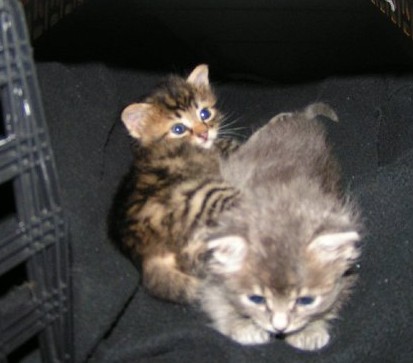
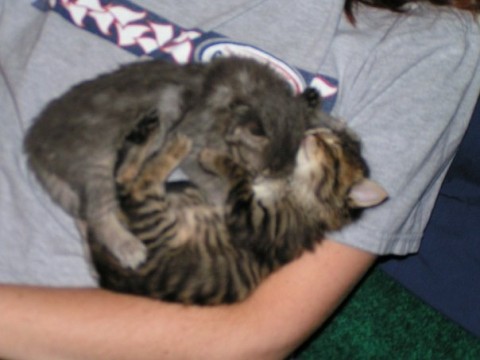
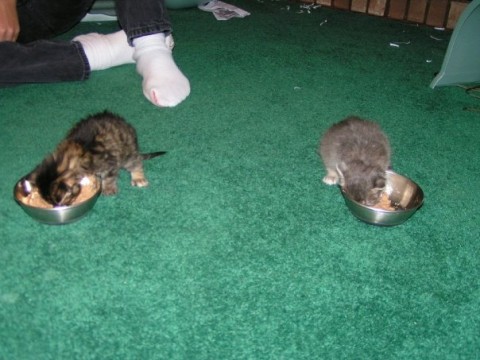
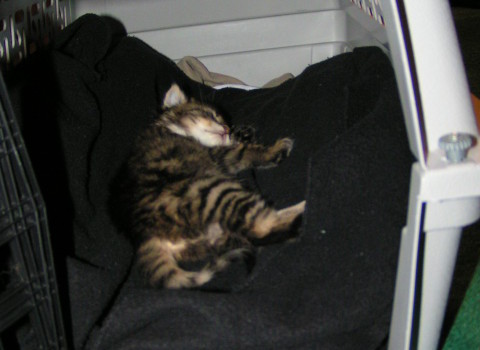
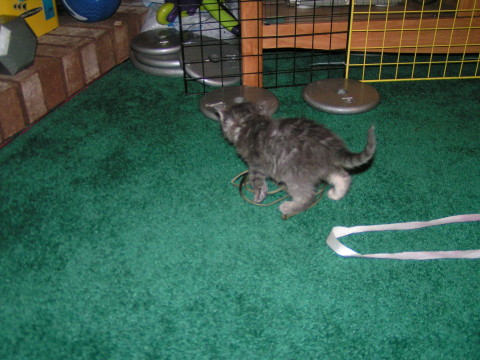
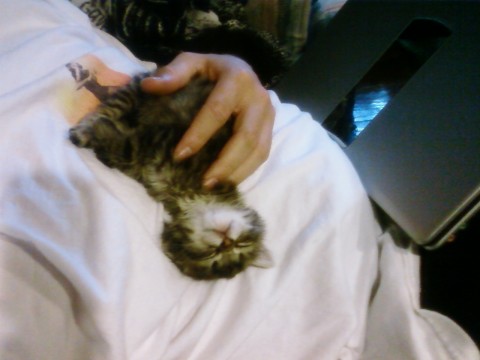
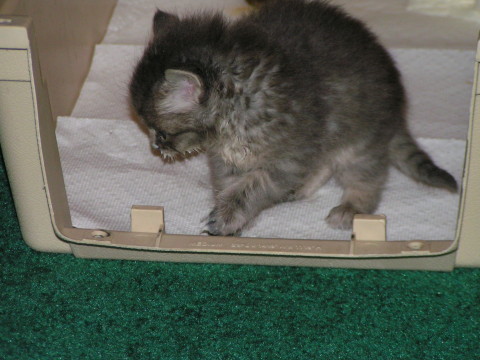
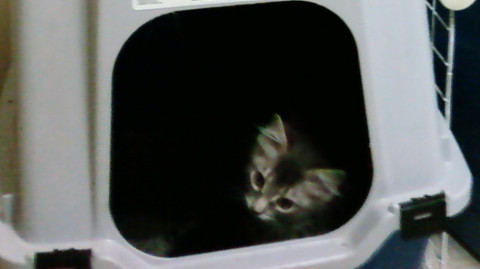
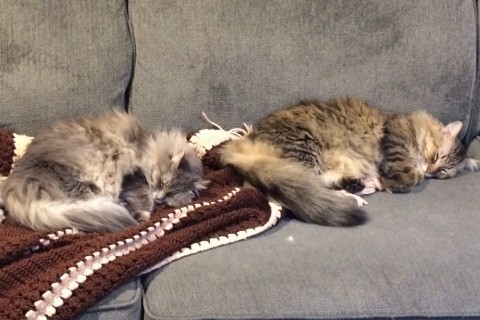

l was not so sucessful our steady kittens died but we did our best if)l know what l know now l believe the kittens would of survive
I’m so sorry! That must have been heartbreaking. I know a lot of people who haven’t been as lucky with kittens and my heart breaks every time. I’m so sorry for your loss.